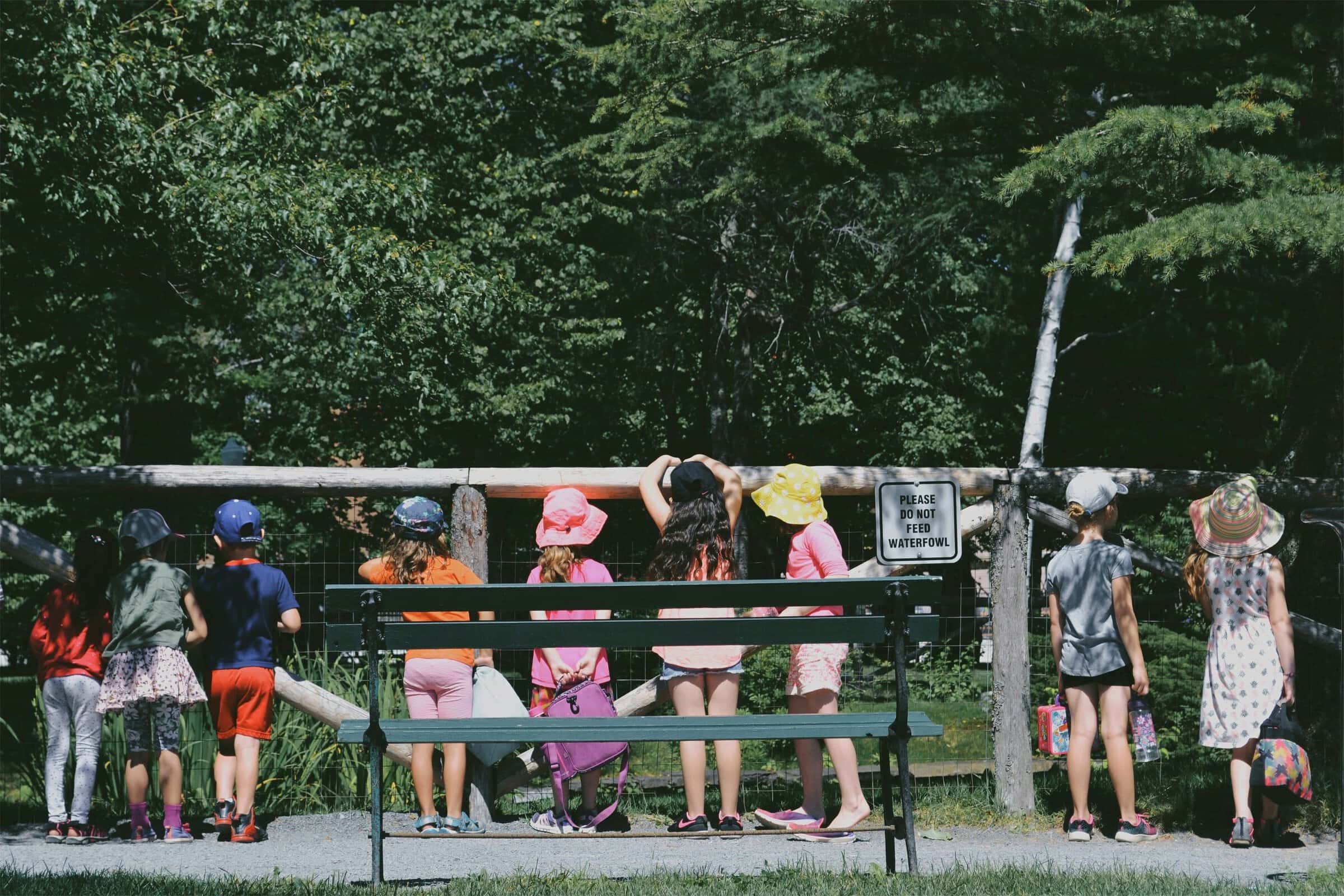Why do schools have to have fundraisers every year? CharityAuctionsToday explains why it might sometimes feel like your kids' school is constantly raising money.
Schools are more than just places of learning. They are hubs of community, creativity, and growth.
Yet, many find themselves grappling with financial constraints. This is where school fundraising comes into play.
Fundraising efforts are not just about bridging budget gaps. They also enhance educational programs and foster a sense of community.
Because Every Child Deserves More Than What’s in the Budget
Your school shouldn’t rely on old funding limits — launch an auction that empowers your community, elevates learning, and brings real resources to the classroom.
Launch a School Auction TodayBut why do schools have to raise funds? What role do students and parents play in these efforts?
This article delves into the dynamics of school fundraising. It explores the reasons behind these initiatives and their impact on the school community.
Whether you're a parent, educator, or simply interested in the topic, this article offers insights into the world of school fundraising.
The Need for School Fundraising
Does it feel like every year, multiple times per year, you receive another fundraising notice from your school? It might be a request for donations or a candy sale in which you will feel obligated to help your child achieve their goals (bringing that case to work with you for weeks). You might be feeling a little bit of school fundraiser burnout.
School fundraising is a common practice worldwide. It's a response to the financial challenges schools face. Government funding often falls short of covering all the needs of a school. This is where fundraising steps in.
Fundraising efforts help schools provide a comprehensive education. They bridge the gap between the budget and the bare-bones cost of education.
In essence, school fundraising is a lifeline for many schools. It ensures they can offer quality education despite financial constraints.
Understanding School Budgets
School budgets are complex. They need to cover a wide range of costs.
These include salaries, maintenance, utilities, and educational resources. However, government funding often falls short.
NPR explains that the national average of government spending per student per year in the US is $14,347.
However, most of this goes towards teachers' salaries and building maintenance. The principal of a school might have roughly $1,200 per student, and there are rules and restrictions on what this money can be used for.
This means that activities like sports, field trips, and other out-of-the-classroom learning can be outside a school's government-allocated budget.
This shortfall is where fundraising comes in. It helps schools meet their financial needs and provide quality education.
Enhancing Educational Programs
Fundraising plays a crucial role in enhancing educational programs. It allows schools to offer more than the basic curriculum.
These funds can support arts programs, sports teams, and other extracurricular activities. They enrich the learning experience for students. It's easier to learn when learning is fun and offers new things to see and do.
This is especially true in those communities where large portions of the students might be at a disadvantage already. Millions of children in the US live below the poverty line, experiencing hunger and homelessness each year.
In this way, fundraising contributes to a well-rounded education. It helps students explore their interests and talents beyond the classroom.
Bridging the Financial Gap
Fundraising helps bridge the financial gap in schools. It supplements the budget and covers additional costs.
These costs can include technology upgrades, field trips, and special projects. Without fundraising, these opportunities might not be possible.
How Fundraising Supports Schools
Fundraising plays a vital role in supporting schools. It provides additional resources that enhance the learning environment.
These resources can include books, lab equipment, and technology. They enrich the educational experience for students. Fundraising also supports infrastructure improvements. It can help schools maintain and upgrade their facilities.
Moreover, fundraising can support scholarship programs. These programs can make education more accessible for all students.
Fundraising is a crucial tool for schools. It helps them provide a better learning environment and more opportunities for students.
Resources and Technology
Fundraising can help schools acquire necessary resources and technology. These are often not covered by the school budget.
These resources can include new textbooks, lab equipment, and digital devices. They can enhance the learning experience for students.
Fundraising can help schools stay up-to-date with the latest educational tools and technology. It ensures students have access to the resources they need to succeed.
Extracurricular Activities and Events
Fundraising also supports extracurricular activities and events. These are crucial for a well-rounded education.
These activities can include sports teams, arts programs, and clubs. They provide students with opportunities to explore their interests outside the classroom.
Fundraising helps schools offer a diverse range of activities and events. It enriches the educational experience for students.
Public vs Private School Fundraising
Public and private schools often have different fundraising needs and strategies. This is due to their unique funding structures.
Public schools rely heavily on government funding. However, this funding often falls short of what's needed.
Private schools, on the other hand, rely more on tuition fees and donations. They often have more flexibility in their fundraising efforts.
Despite these differences, both types of schools can benefit greatly from successful fundraising campaigns.
Different Challenges and Strategies
Public schools often face challenges in fundraising due to strict regulations. They may also have less access to wealthy donors.
Private schools may face challenges in maintaining donor engagement. They often rely heavily on a small group of donors. These donors may lose interest as their children graduate.
Both types of schools can employ creative strategies to maximize their fundraising efforts.
Community Involvement and Impact
Community involvement is crucial for successful school fundraising. It can help schools reach their fundraising goals.
Community members can contribute in various ways. They can donate money, volunteer their time, or offer goods and services for fundraising events.
Community involvement can help schools provide better resources and opportunities for their students.
Download Free School Fundraiser Flier Templates
Use our flier templates to create eye-catching posters for your school's fundraiser. Download Here
The Role of Students and Parents in Fundraising
Students and parents play a vital role in school fundraising. Their involvement can significantly boost fundraising efforts.
Students can participate in various fundraising activities. These activities can also contribute to their personal development.
Parents, on the other hand, can volunteer their time and skills. They can help organize and execute successful fundraising events.
The involvement of students and parents can greatly contribute to the success of school fundraising.
Student Fundraising Activities
Students can participate in various fundraising activities. These can range from bake sales to sponsored runs.
These activities not only raise funds but also teach students valuable skills. They learn about teamwork, leadership, and financial responsibility.
Parent Volunteers and Organizing Events
Parent volunteers are crucial for successful fundraising events. They can help with planning, organizing, and executing these events.
Parents can also use their networks to reach more potential donors. This can significantly boost fundraising efforts.
Need help sending emails for your school fundraiser? Use our subject lines to inspire you.
Ethical Considerations and Transparency
Ethical considerations and transparency are crucial in school fundraising. They ensure that funds are used appropriately and for the intended purpose.
Schools must adhere to ethical practices in fundraising. This includes being transparent about how funds are used.
Ethical considerations and transparency are key to maintaining trust in school fundraising efforts.
Communicating with Stakeholders
Communication with stakeholders is key in school fundraising. Schools should clearly communicate their fundraising goals and how funds will be used.
Stakeholders should also be updated regularly on the progress of fundraising efforts. This can help maintain their interest and support.
The Future of School Fundraising
School fundraising is a dynamic field. It continues to evolve with changing times and needs.
The future of school fundraising lies in adapting to emerging trends and measuring success and impact effectively.
Emerging Trends and Adaptation
Emerging trends in school fundraising include the use of digital platforms and social media. These tools can help reach a wider audience and facilitate easy donations.
Schools need to adapt to these trends to stay relevant. This includes training staff and volunteers on how to use these tools effectively.
Adapting to emerging trends is crucial for the future success of school fundraising. It can help schools stay ahead of the curve and keep the community, parents, and students engaged.
Measuring Success and Impact
Measuring the success and impact of fundraising activities is important, especially when fundraising is an annual project. It helps schools understand what works and what doesn't.
Success can be measured in terms of funds raised, but also in terms of community engagement and student development. Did the read-a-thon get kids to read above their grade level? Did you get more donations from people who don't have students at your school? These are just some questions you can ask to measure success.
Final Thoughts
You might feel a little put upon each time your kid brings home another fundraising activity that you feel obligated to take part in. It might be that you cannot support the fundraiser this year at all: that's fine.
Try to remember that there are many great reasons to invest in your community's schools. And, many ways to do so. If you cannot give money, consider giving your time. Even if you just volunteer to post fliers, every little bit can help school fundraisers succeed.
Frequently Asked Questions
Why do schools need to raise funds in the first place?
School budgets often cover core academics and operations, but leave gaps for enrichment—arts, athletics, clubs, field trips, technology refreshes, teacher grants, and campus improvements. Fundraising fills these gaps so students have a fuller experience.
What do fundraising dollars typically pay for at a school?
- Classroom resources (books, lab supplies, art materials).
- Technology (devices, licenses, makerspace tools).
- Student activities (clubs, competitions, field trips).
- Campus upgrades (shade, gardens, seating, murals).
- Teacher mini-grants and professional development.
If public schools get government funding, why still fundraise?
Public funds prioritize mandated programs and essential services. Fundraising lets communities support electives, enrichment, and enhancements that elevate student experience but aren’t guaranteed in the base budget.
What’s the difference between operating budgets and enhancement funds we raise?
Operating budgets pay for core staffing and required services. Enhancement funds are discretionary, driven by school priorities and community input, and typically support extras that improve outcomes or climate.
How can we fundraise without creating inequities among students and families?
- Offer zero-pressure participation and no pay-to-play requirements.
- Provide non-monetary ways to help (volunteer shifts, sharing links).
- Use inclusive events and low-cost activities; avoid frequent selling.
- Allocate funds with a transparent, student-needs lens.
Who decides how fundraising money is spent at our school?
Typically a leadership group (e.g., principal plus PTA/PTO board/committee) proposes priorities aligned to the school plan, gathers community input, and approves a budget in open meetings with published minutes.
How much should we aim to raise—and how many fundraisers per year is reasonable?
Work backward from a needs list and costs, then choose 1–2 anchor efforts (e.g., fun run + auction) and a few low-lift options. Fewer, better-run campaigns reduce burnout and usually raise more per effort.
How do we keep fundraising transparent and build trust with families and staff?
- Publish budgets, goals, and post-event results with simple charts.
- Share photos/outcomes tied to each funded item or program.
- Offer Q&A at meetings; invite input on next priorities.
What’s the difference between restricted and unrestricted donations to the school/PTA?
Restricted gifts are earmarked for a specific purpose (e.g., library books). Unrestricted gifts allow leaders to direct funds to the highest-impact needs as they arise. Be clear about how gifts are categorized and reported.
What’s the best way to explain “why we fundraise” to families and the community?
- State the student benefit in one sentence.
- Share a cost breakdown (e.g., “$15,000 = new lab kits for 500 students”).
- Offer multiple ways to help: donate, share, volunteer, employer match.
- Close the loop with “you made this possible” updates.
Are there alternatives to product sales that still raise meaningful funds?
- No-sell “direct give” campaigns with employer matching.
- Fun runs, read-a-thons, or service-a-thons that tie to student goals.
- Auctions and community events with sponsorships.
- Grants from local foundations or businesses.
How can we avoid donor fatigue and still meet our goals each year?
Consolidate asks into a clear calendar, segment messages, celebrate progress, and vary formats. Provide opt-in updates and respect communication preferences.
How do corporate matching gifts and sponsorships fit into school fundraising?
Employer matching can double donations—promote it on forms and receipts. Sponsorships from local businesses add revenue and community ties; offer simple, family-friendly recognition options.
Should students participate in fundraising—and what’s age-appropriate?
Yes, with safety and dignity. Emphasize goal-setting, teamwork, and gratitude (thank-you notes, updates). Keep tasks simple and voluntary; avoid high-pressure sales.
How do we clarify what fees cover versus what fundraising covers for families?
Create a one-page visual: “Fees fund X (required costs); fundraising fuels Y (enhancements).” This reduces confusion and increases trust in how dollars are used.
Do we need approvals or special rules to fundraise as a school group or PTA/PTO?
Most districts and PTAs have policies for fundraising, sponsorships, raffles, and use of school logos and facilities. Check your handbook and obtain required approvals before launching an activity.
Are donations to our school/PTA tax-deductible, and how should we receipt them?
This depends on your entity and local rules. Many PTAs/PTOs are tax-exempt and issue donation acknowledgments; schools may route gifts through a district foundation. Provide timely receipts and consult your organization’s guidelines for specifics.
How do we measure the impact of funds raised and report back to the community?
- Publish a simple “funds in → outcomes out” summary after each campaign.
- Share photos, quotes, and quick stats tied to each funded item.
- Invite feedback and ideas for next year’s priorities.
💡 Try this in ChatGPT
- Summarize the article "Why Do Schools Have to Raise Funds?" from https://ghost.charityauctionstoday.com/p/why-do-schools-have-to-raise-funds/ in 3 bullet points for a board update.
- Turn the article "Why Do Schools Have to Raise Funds?" (https://ghost.charityauctionstoday.com/p/why-do-schools-have-to-raise-funds/) into a 60-second talking script with one example and one CTA.
- Extract 5 SEO keywords and 3 internal link ideas from "Why Do Schools Have to Raise Funds?": https://ghost.charityauctionstoday.com/p/why-do-schools-have-to-raise-funds/.
- Create 3 tweet ideas and a LinkedIn post that expand on this FAQ topic using the article at https://ghost.charityauctionstoday.com/p/why-do-schools-have-to-raise-funds/.
Tip: Paste the whole prompt (with the URL) so the AI can fetch context.
Tom Kelly
Tom Kelly is a nonprofit strategist, bestselling author of Million Dollar Nonprofit, and CEO of CharityAuctionsToday. Dedicated to helping organizations scale through AI and automation.
Table of contents
Create Your Auction
Raise 40% more with smart bidding tools






